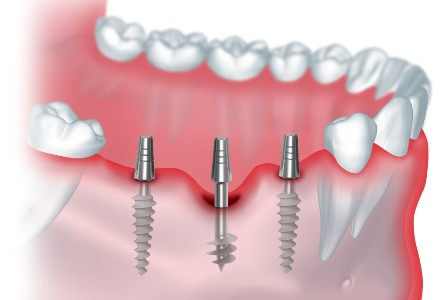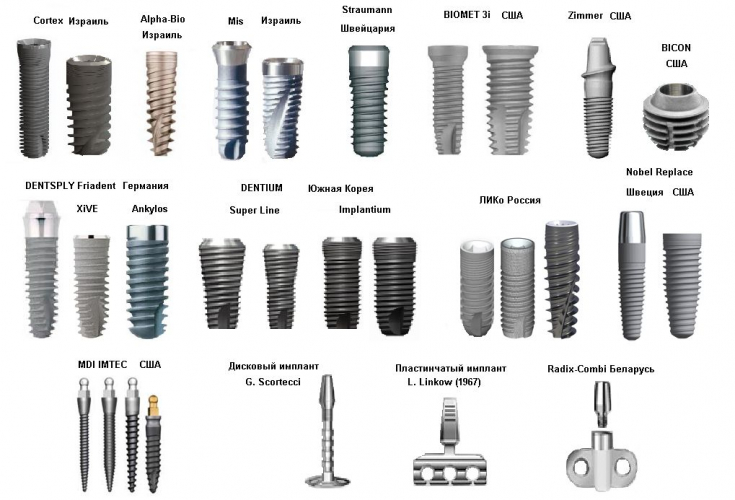Change in living conditions, nutrition, as well as traumatization of the jaw lead to an increase in the number of adentia. Loss of a tooth is increasingly the reason why not only senile, but also middle-aged and young patients turn to the dentist. Therefore, in dentistry began to perform non-removable designs of dentures.
Today, there are many varieties of dental implants that differ in composition, method of installation and function.
Let's consider in the material estet-portal.com the main types of fixed dental implants.
Features of the use of plate dental implants
Fibroosseointegrated lamellar implants were preferred during the development of dental implantation as a new method in dentistry.
Follow us on Instagram!
Such implants were used in the distal alveolar processes of the jaws. Lamellar dental implants can withstand large vertical loads that occur when chewing food. A feature of such implants is ease of installation and a short postoperative period.

Lamellar dental implants are less stable as supports for dental prosthetics in case of predominance of sagittal and transversal masticatory loads. In such cases, preference was given to osseointegrated screw implants.
Benefits and applications of screw dental implants
Screw dental implants withstand all types of chewing load, they are very effective for complete edentulous. Installation of screw implants is possible in the anterior and distal parts of the alveolar processes. Screw two-stage implants are optimal for jaw regions, which are characterized by high bone density. This is the anterior part of the upper jaw and the symphysis of the lower jaw.
Basal dental implantation - advantages of the method
In some cases, screw dental implants were placed as spares. Then they were excluded from the act of chewing, and bridge structures were made on the existing abutment teeth. In the presence of breakage of bridges or changes in the oral cavity, the endosseous parts of these implants were opened, the cover screws were removed, and supraconstructions were selected. The process of further prosthetics was carried out with the manufacture of solid-cast metal-ceramic structures.
Benefits of screw dental implants:
• when forming a bone bed, more bone tissue can be preserved;
• the ability to produce a one-time functional load;
• great initial fix;
• slow bone resorption around the implant;
• the ability to change the position of the implant.
Opportunities of dental implants and dental implantation in general
It is possible to carry out direct implantation of endosseous screw implants after the extraction of a tooth that is unsuitable from a prosthetic point of view. Since the preservation of a tooth with a dubious periodontal prognosis is not required, this tactic can reduce the treatment time. This, in turn, prevents atrophy of the bony walls of the alveoli.

In the presence of intact adjacent teeth, a single tooth defect is required to be repaired using a two-stage screw implant. In case of insufficient contact between the crown part of the dental implant and the mouth of the alveolus, the space between them should be filled with preparations. These drugs should have the properties of inducers and conductors of osteogenesis to stimulate active osteogenesis.
The use of dental implants of different types and sizes in the process of dental implantation is quite effective, and the presence of structures of different sizes and shapes makes it possible to achieve good fixation of intraosseous implants with further fixed prosthetics, which significantly improves the patient's quality of life for many years.






Add a comment